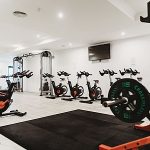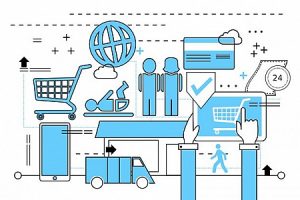Office equipment has long been the backbone of business operations, enabling organizations to manage tasks, communicate effectively, and maintain productivity. Today, however, office equipment is evolving rapidly, driven by technological advancements, changing workstyles, and a growing emphasis on sustainability and employee well-being. As companies adapt to these changes, the modern office equipment landscape is transforming into a dynamic ecosystem that supports innovation and flexibility.
One of the most significant changes in office equipment is the integration of digital technology. Traditional devices such as printers, copiers, and telephones are no longer isolated tools; instead, they have become interconnected components of an integrated office ecosystem. Modern multifunction devices now combine printing, scanning, copying, and faxing capabilities with advanced features like cloud connectivity and real-time data sharing. This integration not only streamlines workflows but also enhances collaboration among team members, whether they are working on-site or remotely.
In parallel with digital integration, ergonomic design has taken center stage. With employees spending long hours at their desks, companies are increasingly investing in office equipment that prioritizes comfort and health. Adjustable sit-stand desks, ergonomic chairs with customizable lumbar support, and monitor arms designed to reduce neck and eye strain are just a few examples of how office equipment is being redesigned to address the physical demands of modern work. From my perspective, this shift toward ergonomics is not merely a trend—it is a necessary response to the health challenges associated with prolonged sitting and repetitive motion. When workers are comfortable and physically supported, their productivity and overall job satisfaction improve dramatically.
Another important development in office equipment is sustainability. As environmental concerns become more pressing, businesses are rethinking the life cycle of their equipment. Companies are opting for energy-efficient devices that consume less power, utilize recycled materials, or are designed to be easily upgraded rather than replaced. For instance, many organizations are choosing printers and computers with eco-friendly certifications, and manufacturers are increasingly incorporating sustainable materials in their product designs. In my view, the drive toward sustainability in office equipment is both an ethical imperative and a strategic business decision. Reducing energy consumption and waste not only helps the environment but also reduces operational costs in the long run.
The shift toward remote and hybrid work models has also had a profound impact on office equipment. With more employees working from home, companies have had to extend the definition of the office beyond the physical space. This trend has led to a surge in demand for portable and compact office equipment, such as lightweight laptops, wireless peripherals, and mobile conferencing systems. Additionally, equipment that facilitates seamless remote communication—like high-quality webcams, noise-cancelling headsets, and interactive digital whiteboards—has become essential. These tools ensure that remote workers remain connected and can collaborate effectively, regardless of their location. From my perspective, the future of office equipment lies in its ability to adapt to various work environments. Versatility and portability are no longer optional features; they are critical components that enable businesses to maintain continuity in an increasingly decentralized world.
Moreover, the emergence of smart office equipment is transforming how businesses manage their resources. Internet of Things (IoT) technology is now being integrated into devices such as printers, lighting systems, and HVAC units, allowing for real-time monitoring and automated adjustments. For example, smart sensors can detect low toner levels and automatically reorder supplies, while intelligent lighting systems adjust brightness based on occupancy and natural light levels. This automation not only reduces the administrative burden on staff but also improves energy efficiency and overall workplace productivity. In my opinion, the convergence of IoT and office equipment represents a significant leap forward. By harnessing data and automation, companies can optimize their operations and create a more responsive and efficient working environment.
In addition to these trends, cybersecurity remains a critical consideration in the design and use of modern office equipment. With increased connectivity comes the risk of cyberattacks, data breaches, and unauthorized access. Manufacturers and IT departments are now working together to implement robust security features, such as encrypted data transmission, secure boot processes, and regular firmware updates. These measures help protect sensitive company information and ensure that the equipment remains a reliable asset rather than a vulnerability. I believe that a proactive approach to cybersecurity in office equipment is essential, as it safeguards not only the technology itself but also the integrity of the entire organization.
Looking ahead, the future of office equipment appears poised for further transformation. Advancements in artificial intelligence (AI) and machine learning promise to further enhance device capabilities, enabling predictive maintenance, automated troubleshooting, and personalized user experiences. As these technologies mature, we can expect office equipment to become even more intuitive, adapting in real time to the needs of individual users and the demands of dynamic work environments.
In conclusion, the evolution of office equipment reflects broader changes in how we work and live. The convergence of digital technology, ergonomic design, sustainability, and smart automation is reshaping the tools we use every day. My perspective is that organizations that invest in modern, adaptable, and secure office equipment will not only boost productivity but also create a healthier and more sustainable work environment. As we move further into the future, the ability to seamlessly integrate advanced equipment into diverse work settings will be key to maintaining a competitive edge and fostering long-term success.













